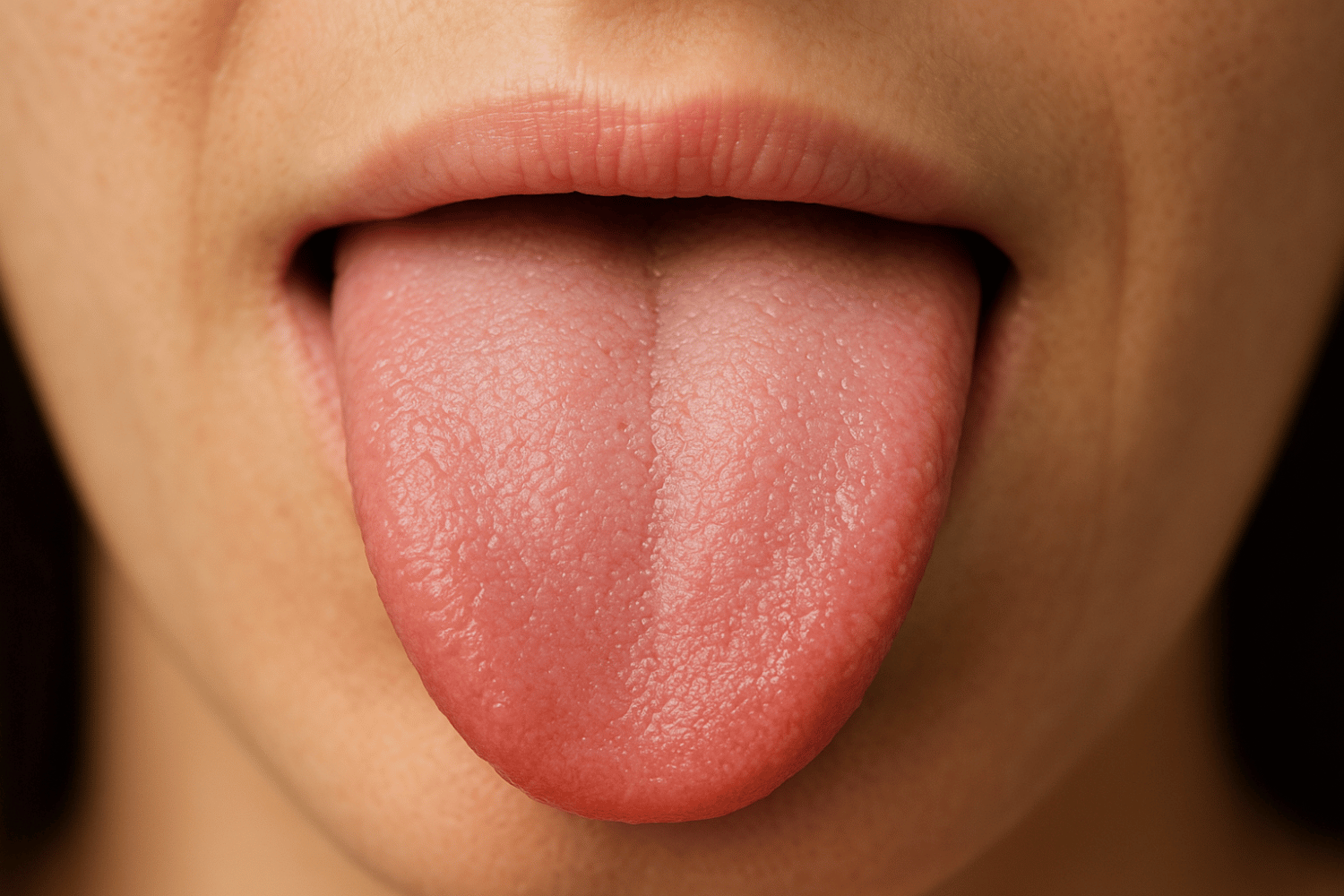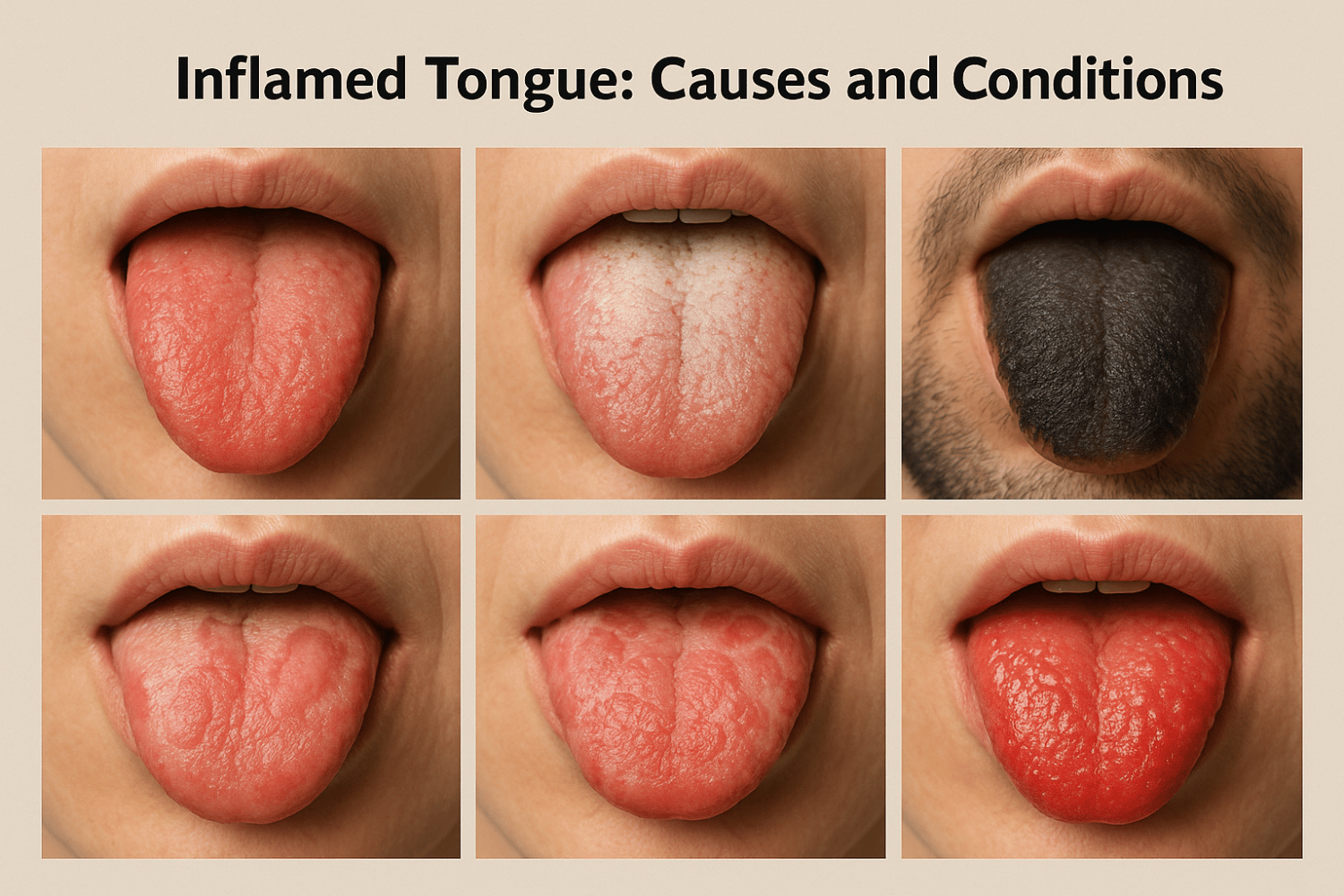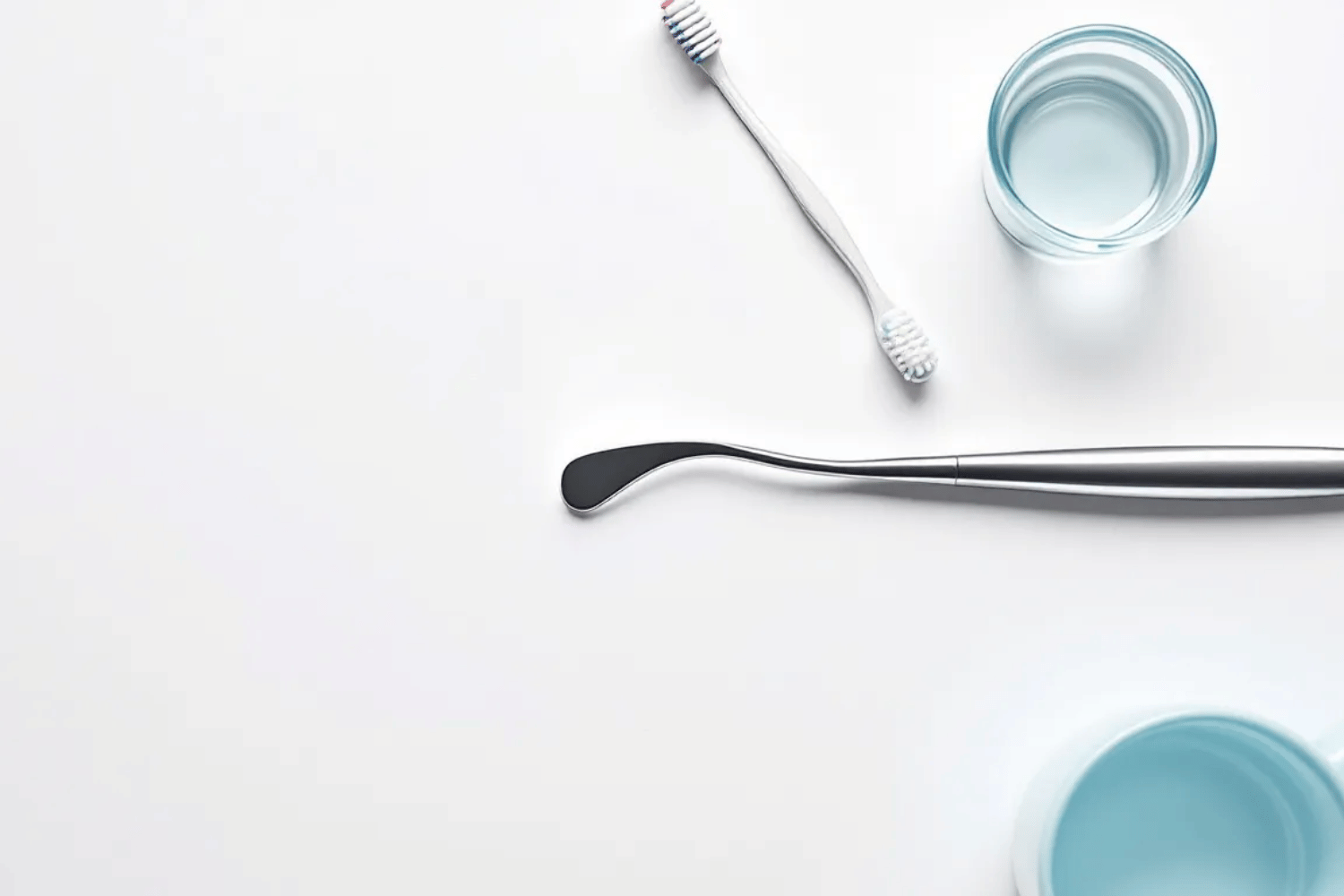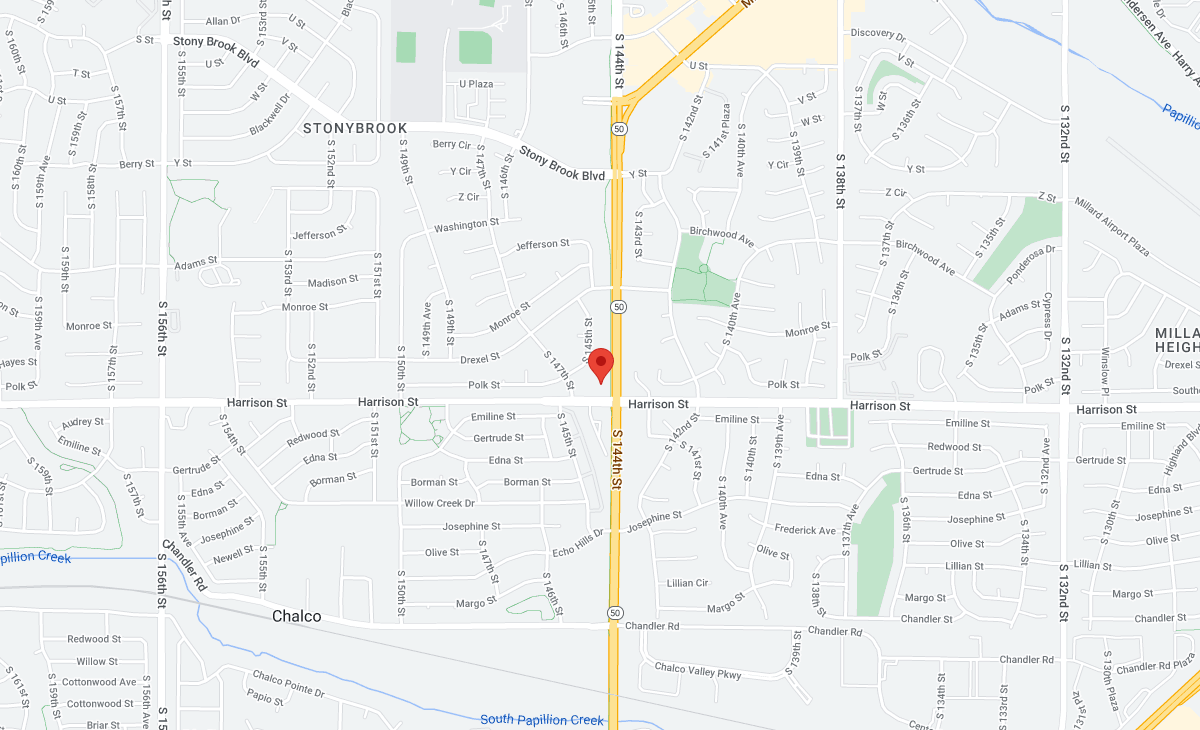Tongue Discoloration: Understanding What Different Colors Mean for Your Health
Looking in the mirror and noticing your tongue isn’t its usual pink color can be concerning. Your tongue serves as a window into your overall health, and changes in its appearance shouldn’t be ignored. At Today’s Dental, we believe in empowering our patients with knowledge about their oral health, including understanding what different tongue colors might mean for their wellbeing.
Tongue discoloration affects millions of people and can range from harmless temporary changes to indicators of serious underlying health condition. Understanding the difference between normal variations and concerning changes can help you make informed decisions about when to seek professional care.
Key Takeaways
- Tongue discoloration can indicate various health conditions ranging from minor hygiene issues to serious systemic diseases
- A healthy tongue is typically light pink with a slight white coating and small bumps called papillae
- Common causes include poor oral hygiene, dietary factors, medications, infections, and nutritional deficiencies
- Persistent color changes lasting more than two weeks warrant professional medical evaluation
- Regular oral hygiene and dental checkups help prevent and detect tongue discoloration early
What Is Tongue Discoloration?
Tongue discoloration refers to any abnormal change in your tongue’s color from its normal light pink appearance. This muscular organ contains thousands of taste buds and tiny bumps called papillae that give it its characteristic texture. When these structures become inflamed, infected, or affected by external factors, the tongue’s appearance can change dramatically.
The tongue’s color reflects your overall health status more than you might realize. Changes can occur uniformly across the entire tongue surface or appear as patches in specific areas. These alterations may develop gradually over time or appear suddenly, each pattern providing valuable clues about potential underlying causes.
Understanding how your tongue may respond to various factors helps you recognize when changes are temporary and harmless versus when they require prompt medical attention. The tongue surface is particularly sensitive to bacterial changes, nutritional deficiencies, and systemic health conditions.

Normal Tongue Appearance vs. Concerning Changes
A healthy tongue typically appears light pink to dark pink in color with a slightly moist surface covered in small bumps. A thin whitish coating is normal and consists of dead skin cells, food debris, and bacteria that naturally accumulate throughout the day. The tongue should feel flexible and pain-free during normal movement and function.
Normal variations exist among different populations, with some individuals naturally having purple or brown pigmentation, particularly those with darker skin tones. These natural color variations are typically present from birth or early childhood and remain consistent over time.
The papillae structure plays a crucial role in normal tongue appearance, creating the characteristic rough texture that helps with taste sensation and food processing. When papillae become inflamed or enlarged, they can trap bacteria and debris, leading to visible color changes.
Red flags that indicate the need for professional evaluation include persistent discoloration lasting more than two weeks, tongue pain, difficulty swallowing, a swollen tongue, or white patches that cannot be removed by gentle scraping. Any sudden onset of bright red tongue or blue tongue discoloration requires immediate medical assessment.
Common Types of Tongue Discoloration
White Tongue Discoloration
White tongue is one of the most common forms of discoloration and often results from poor oral hygiene practices. When dead cells accumulate on the tongue surface, they create a thick white coating that can harbor bacteria and cause bad breath. Dehydration and dry mouth also contribute to this buildup.
Oral thrush, a fungal infection caused by Candida overgrowth, presents as white patches that may extend throughout the mouth. This condition is more common in individuals with weakened immune systems, those taking antibiotics, or people with certain medical conditions like diabetes.
Leukoplakia appears as white patches that cannot be scraped off and may indicate a precancerous condition, particularly in tobacco users. Geographic tongue creates a map-like pattern with white borders surrounding red patches that shift location over time, though this condition is generally harmless.
A routine dental exam can help distinguish between harmless white coating and more serious conditions requiring further evaluation. Regular tongue cleaning with a tongue scraper can prevent many cases of white tongue caused by poor oral hygiene.
Red or Strawberry Tongue
A bright red tongue often signals vitamin deficiencies, particularly B vitamins including B12, folic acid, and niacin. These nutritional deficiencies can cause the tongue to become smooth and bright red as papillae are lost and inflammation develops.
Strawberry tongue is a distinctive presentation associated with scarlet fever, where the tongue appears bright red with prominent white-coated papillae resembling strawberry seeds. This condition requires antibiotic treatment and immediate medical attention.
In children, strawberry tongue may indicate Kawasaki disease, a serious inflammatory condition affecting blood vessels throughout the body. This autoimmune disorder requires prompt medical attention to prevent potential heart complications.
Glossitis, or tongue inflammation, can cause the tongue to appear smooth and red due to papillae loss. Various factors including spicy or acidic foods, certain medications, and autoimmune disorders can trigger this inflammatory response.

Yellow Tongue Discoloration
Yellow tongue typically develops when bacteria become trapped between inflamed papillae, creating a yellowish discoloration that may progress to more severe changes if left untreated. Contributing factors include poor oral hygiene, dry mouth from mouth breathing, smoking, and excessive alcohol consumption.
This discoloration often represents an intermediate stage that can progress to black hairy tongue if the underlying causes aren’t addressed. The yellow appearance results from bacterial overgrowth and the accumulation of dead cells on the tongue surface.
Certain medical conditions affecting liver function can also cause yellow discoloration as bilirubin accumulates in tissues. However, this type of yellowing typically affects other areas of the body as well, including the skin and eyes.
Improved oral hygiene, including daily tongue cleaning and staying well-hydrated, often resolves yellow tongue within a few weeks. If discoloration persists despite good oral hygiene practices, further testing may be necessary to identify underlying causes.
Black Tongue Discoloration
Black hairy tongue results from the elongation and darkening of filiform papillae, creating a hairy appearance on the tongue surface. This benign condition affects up to 11% of elderly individuals in institutional settings and is more common among tobacco users and those with poor oral hygiene.
Certain medications, particularly bismuth-containing preparations like Pepto-Bismol, can cause temporary black discoloration that resolves after discontinuing the medication. Taking antibiotics can also disrupt the normal oral bacteria balance, leading to overgrowth of pigment-producing bacteria.
Risk factors for black tongue include tobacco products use, excessive coffee or tea consumption, poor oral hygiene, and dry mouth conditions. Despite its alarming appearance, this condition rarely causes symptoms beyond cosmetic concerns.
Treatment focuses on appropriate treatment of underlying causes, improved oral hygiene with gentle tongue brushing, and avoiding irritating substances. Most cases resolve within weeks to months with proper care and attention to oral health.
Blue or Purple Tongue
Blue tongue discoloration often indicates cyanosis, a condition where insufficient oxygen reaches the tissues. This can result from heart disease, lung problems like COPD, or circulatory issues affecting blood vessels throughout the body.
Temporary blue discoloration may occur with cold exposure, but persistent blue or purple coloration requires immediate medical evaluation. In some cases, enlarged blood vessels under the tongue (sublingual varices) can create a purple appearance, particularly in older adults.
Certain autoimmune disorders and blood circulation problems can also cause persistent purple discoloration. Any sudden onset of blue tongue, especially when accompanied by difficulty breathing or chest pain, constitutes a medical emergency.
While temporary color changes from cold foods or drinks are normal, persistent blue or purple tongue color should prompt immediate consultation with a healthcare provider for proper evaluation and appropriate treatment.
Pale Tongue Discoloration
A pale tongue often indicates anemia, particularly iron deficiency anemia or pernicious anemia caused by vitamin B12 deficiency. These conditions reduce red blood cell production, leading to decreased blood flow and pale tissue appearance.
The tongue may appear smooth and pale as papillae are lost due to nutritional deficiencies. Women with heavy menstrual periods, vegetarians, and individuals with chronic illnesses are at higher risk for developing anemia-related tongue changes.
Chronic medical conditions affecting nutrient absorption or blood production can also cause persistent pale tongue appearance. Poor nutritional status from inadequate diet or malabsorption disorders contributes to this presentation.
Blood testing can identify specific deficiencies, allowing for targeted treatment with appropriate supplements or dietary modifications. Regular monitoring through routine exams helps detect these changes early when treatment is most effective.
Underlying Causes of Tongue Discoloration
Dietary and Lifestyle Factors
Certain foods and beverages are notorious for causing temporary tongue staining. Coffee, tea, berries, and intensely colored foods can leave temporary discoloration that typically resolves with proper oral hygiene. However, chronic exposure to these substances can lead to more persistent changes.
Tobacco products, including smoking and chewing tobacco, cause significant and often permanent tongue discoloration while also increasing the risk of oral cancer. The chemicals in tobacco products not only stain tissues but also disrupt normal healing and increase infection risk.
Alcohol consumption and dehydration significantly impact tongue appearance by reducing saliva production and creating an environment conducive to bacterial overgrowth. Staying hydrated and limiting alcohol intake helps maintain normal tongue color and overall oral health.
Understanding the difference between temporary dietary staining and persistent discoloration helps determine when changes warrant professional evaluation. Most food-related staining resolves within days with good oral hygiene practices.

Medical Conditions and Medications
Systemic diseases including diabetes, autoimmune disorders, and liver disease can manifest as tongue color changes before other symptoms become apparent. These conditions affect blood flow, immune function, and tissue healing, all of which influence tongue appearance.
Certain medications commonly cause tongue discoloration as a side effect. Antibiotics can disrupt normal oral bacteria, while bismuth preparations and some chemotherapy drugs directly cause pigmentation changes. Cancer treatment often affects oral tissues, leading to various color changes and increased infection risk.
Hormonal changes during pregnancy or menopause can also influence tongue color and texture. These natural fluctuations typically resolve without treatment but may require monitoring if accompanied by other concerning symptoms.
Infectious diseases, including viral, bacterial, and fungal infections, can cause dramatic tongue color changes. Identifying and treating these underlying infections often resolves the associated discoloration completely.
Oral Health and Hygiene Issues
Poor oral hygiene remains the most common preventable cause of tongue discoloration. When bacteria, food debris, and dead cells accumulate on the tongue surface, they create an environment conducive to overgrowth and subsequent color changes.
Dry mouth, medically known as xerostomia, significantly increases the risk of tongue discoloration by reducing the natural cleansing action of saliva. This condition can result from medications, medical treatments, or underlying health conditions.
Oral infections, including bacterial, viral, and fungal causes, can dramatically alter tongue appearance. These infections often respond well to appropriate treatment once properly diagnosed through professional evaluation.
Trauma and injury to tongue tissue can cause temporary or permanent color changes depending on the severity and location of the damage. Even minor injuries from dental work or accidentally biting the tongue can lead to noticeable discoloration during healing.
When to Seek Professional Help
Persistent tongue discoloration lasting more than two weeks warrants professional evaluation, even if no other symptoms are present. This timeframe allows for resolution of temporary changes while ensuring that more serious conditions are identified promptly.
Associated symptoms including tongue pain, swelling, difficulty swallowing, or fever indicate the need for immediate medical assessment. These symptoms may signal serious infections, autoimmune disorders, or other conditions requiring urgent intervention.
Any sudden onset of blue or purple tongue discoloration requires emergency medical evaluation, as this may indicate life-threatening conditions affecting oxygen delivery or circulation. Don’t delay seeking care when these color changes appear suddenly.
White patches that cannot be removed by gentle scraping may indicate precancerous changes, particularly in tobacco users. Early detection and treatment of these lesions significantly improve outcomes and prevent progression to oral cancer.
Changes accompanied by unexplained weight loss, persistent fatigue, or other systemic symptoms require comprehensive medical evaluation to identify potential underlying medical conditions affecting overall health.
Diagnosis and Professional Evaluation
During a routine dental exam, your dental provider will carefully examine your tongue’s appearance, texture, and any areas of concern. This visual inspection provides valuable information about potential causes and the need for additional testing.
A thorough medical history review helps identify potential contributing factors including medications, lifestyle habits, recent illnesses, and family history of relevant conditions. This information guides the diagnostic approach and treatment planning.
Diagnostic tests may include blood work to check for nutritional deficiencies, anemia, or systemic diseases. In some cases, cultures or biopsies may be necessary to identify specific infections or rule out malignant changes.
When necessary, referral to specialists such as oral pathologists, hematologists, or other medical specialists ensures comprehensive evaluation and appropriate treatment. Today’s Dental maintains relationships with trusted specialists to facilitate seamless care coordination.

Treatment Options for Tongue Discoloration
Addressing underlying causes forms the foundation of effective treatment for tongue discoloration. This may involve correcting nutritional deficiencies through dietary changes or supplements, treating infections with appropriate medications, or managing systemic conditions affecting oral health.
Antifungal medications effectively treat oral thrush and other fungal infections that cause white or other color changes. These treatments may be topical or systemic depending on the severity and extent of the infection.
Improved oral hygiene protocols, including regular tongue cleaning with a tongue scraper or soft toothbrush, help resolve many cases of discoloration caused by bacterial overgrowth or poor cleaning habits.
Lifestyle modifications including smoking cessation, dietary changes, and better hydration often lead to significant improvement in tongue appearance. These changes benefit not only tongue color but overall oral health and general wellbeing.
For some conditions, prescription medications targeting specific underlying causes may be necessary. Working closely with your healthcare team ensures optimal outcomes and monitoring for treatment effectiveness.
Treatment Options for Tongue Discoloration
Daily oral hygiene routines should include cleaning your tongue daily with either a tongue scraper or soft toothbrush. This simple practice removes bacteria, food debris, and dead cells that can accumulate and cause discoloration.
Regular dental checkups and professional cleanings allow for early detection of tongue changes and provide opportunities for preventive education. These routine exams help identify potential problems before they become serious concerns.
Staying well-hydrated supports natural saliva production, which helps cleanse the mouth and maintain healthy tongue appearance. Adequate hydration also supports overall health and immune function.
Avoiding tobacco products significantly reduces the risk of tongue discoloration while also decreasing the risk of oral cancer and other serious health conditions. If you currently use tobacco, speak with your healthcare provider about cessation resources.
Managing underlying health conditions effectively through regular medical care helps prevent secondary oral health problems. Conditions like diabetes, autoimmune disorders, and nutritional deficiencies require ongoing management to maintain optimal oral health.
Home Care and Natural Remedies
Proper tongue cleaning techniques involve gently brushing or scraping from back to front, being careful not to trigger the gag reflex or cause trauma to sensitive tissues. Start with light pressure and gradually increase as tolerated.
Salt water rinses provide gentle disinfection and can help reduce bacterial overgrowth contributing to tongue discoloration. Mix half a teaspoon of salt in warm water and rinse gently for 30 seconds before spitting out.
Increased water intake helps combat dry mouth conditions that contribute to bacterial overgrowth and tongue discoloration. Aim for adequate hydration throughout the day, particularly if you take medications that can cause dry mouth.
Probiotics may help support healthy oral bacteria balance, though scientific evidence for their effectiveness in treating tongue discoloration remains limited. Discuss probiotic use with your healthcare provider, especially if you have underlying health conditions.
Home remedies are appropriate for mild, temporary discoloration without associated symptoms. However, persistent changes, pain, or other concerning symptoms require professional evaluation and appropriate treatment rather than continued home care attempts.

Frequently Asked Questions
How long does it take for tongue discoloration to resolve after treatment?
The timeline for resolution depends on the underlying cause. Simple cases related to poor oral hygiene may improve within days to weeks with improved oral hygiene practices. However, discoloration caused by nutritional deficiencies may take several months to fully resolve even with appropriate treatment. Medication-related changes often improve within weeks of discontinuing the offending medication, while some autoimmune-related changes may require ongoing management.
Can certain medications permanently change tongue color?
Most medication-related tongue discoloration is temporary and resolves after discontinuing the medication. However, some chemotherapy drugs and long-term use of certain antibiotics can cause more persistent changes. Bismuth-containing medications like Pepto-Bismol commonly cause temporary black discoloration that typically resolves within days to weeks after stopping the medication. Always consult with your healthcare provider before stopping any prescribed medications.
Is tongue discoloration in children different from adults?
Children can experience unique tongue discoloration patterns, particularly strawberry tongue associated with conditions like scarlet fever or Kawasaki disease. These conditions require immediate medical attention. Children are also more susceptible to oral thrush, especially if they have weakened immune systems or are taking antibiotics. However, many causes of tongue discoloration in children are similar to adults, including poor oral hygiene and certain foods or medications.
What’s the difference between temporary food staining and concerning discoloration?
Temporary food staining typically affects the entire tongue surface evenly and begins to fade within hours to days with normal eating and drinking. The discoloration should easily scrape off with gentle brushing or scraping. Concerning discoloration tends to be more persistent, may appear in patches, cannot be easily removed, or is accompanied by other symptoms like pain, swelling, or changes in taste. When in doubt, it’s always better to have persistent changes evaluated by a healthcare professional.
How often should I clean my tongue to prevent discoloration?
Daily tongue cleaning is recommended as part of your regular oral hygiene routine. This can be done with a tongue scraper or by gently brushing your tongue with a soft toothbrush. Clean from back to front with gentle pressure, and rinse thoroughly afterward. Some people benefit from cleaning their tongue twice daily, particularly if they have dry mouth, take certain medications, or have a history of tongue discoloration. Your dental professional can provide personalized recommendations based on your individual risk factors and oral health status.











